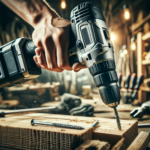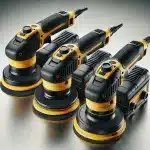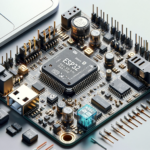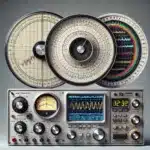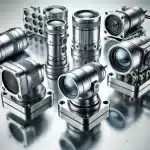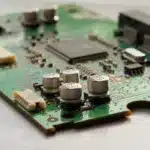
Introduction
From the insistent ring of a smoke detector, the beeping sound of the microwave, and the playful melody of a child’s toy, piezo buzzers are indispensable across countless electronic devices. But what exactly are these devices, and how do they work? Learn everything you need to know about these ubiquitous components, covering their popular types, importance in electronics, and versatile uses across various applications.
What are Piezo Buzzers? Definition and Key Components
Piezo buzzers, also called piezoelectric buzzers or sounders, are small, versatile acoustic devices designed to generate alarms and audio signals. These electronic devices utilise the piezoelectric effect to convert an electrical signal into mechanical vibration (sound). A piezo buzzer is an unassuming little component, the heartbeat of countless consumer and industrial devices.
The key component inside a piezoelectric buzzer is a thin piezoelectric ceramic disc—often made from materials like lead zirconate titanate (PZT)—bonded to a metal diaphragm. Electrical terminals like leads or pins supply voltage to the ceramic discs. It also consists of an oscillator that generates electrical pulses to drive the piezoelectric disc. The housing of a piezoelectric transducer encases the components and helps amplify the sound.
Understanding the Piezoelectric Effect: Turning Pressure Into Power
The heart of a piezo buzzer lies in the piezoelectric effect, a phenomenon discovered by Jacques and Pierre Curie in 1880. It typically states that certain materials, like quartz and ceramics, generate electrical charge in response to applied mechanical stress. Conversely, applying an electrical voltage to these materials causes them to deform physically. This interplay between electrical and mechanical energy is the foundation of piezo buzzer operation.
Importance of Piezo Buzzers in Electronics
Piezo buzzers are crucial components in modern electronics due to their simplicity, cost-effectiveness, reliability, and efficiency. They are ideal for various applications requiring audio feedback. The low power consumption and compact size of these electronic components make them suitable for battery-operated devices and space-constrained designs. Additionally, piezo buzzers are of significant importance as they are commonly found in alarms, timers, watches, toys, and various electronic devices where a clear and distinct sound is needed for awareness and safety.
How Do Piezo Buzzers Work? The Science Behind Their Mechanism
The core of a piezo buzzer is the piezoelectric element—typically a ceramic disc that changes shape slightly upon passing an electric current through it. This deformation causes the disc to vibrate, producing sound waves. The sound frequency is determined by the voltage pulses’ rate applied to the piezoelectric element.
Most Standard Types of Piezo Buzzers Explained
Piezo buzzers can be categorised into various main types based on their drive types, sound output, size and shape, mounting configurations, and intended applications. Some standard types include:
Active Piezo Buzzers
Also called self-drive piezo buzzers, active piezoelectric buzzers have built-in oscillating circuits and only require a DC power supply. They are easier to implement due to their internal oscillator, but they offer less flexibility in terms of sound control. Active buzzers are used in scenarios where a continuous tone is sufficient, such as security systems, timers, and household appliances.
Passive Piezo Buzzers
These external-drive piezo buzzers require an external oscillating source to produce sound. Moreover, they allow more control over the tone and frequency and flexibility to generate various tones, beeps, or even simple melodies. Passive buzzers are employed in devices where unique tones or sound patterns are needed, such as musical gadgets or multi-tone alarms.
Magnetic Buzzers
Magnetic buzzers are similar to piezo buzzers; however, they use an electromagnet instead of a piezoelectric element. They are known for producing a lower-frequency sound and are more durable in harsh environments. Magnetic buzzers are suitable for heavy machinery and warning signals in harsh industrial applications.
Other Piezoelectric Buzzer Types Based on Mounting Configurations
One way to categorise these buzzers is by their mounting configuration, determining how the buzzer is attached to a surface or device. Different mounting configurations can affect the buzzer’s performance, including its sound output, frequency response, and durability. Some common mounting configurations include surface mount, through-hole, and panel mount. Each configuration has its own pros and cons across specific applications. For example, surface-mount buzzers, due to their compact size, are often used in small electronic devices, while panel-mount buzzers are preferred in industrial settings for their robustness.
Applications of Piezo Buzzers Across Various Sectors
Piezo buzzers find their way into countless devices and systems. Some typical applications include:
- Alarms and Security Systems: Door alarms, motion sensors, and burglar alarms.
- Household Appliances: Washing machines, microwaves, and dishwashers use buzzers for alerts and notifications.
- Automotive Industry: Parking sensors, seatbelt reminders, and warning signals.
- Medical Devices: Indicators for heart-rate monitors, infusion pumps, and diagnostic equipment.
- Consumer Electronics: Toys, gadgets, and handheld devices where audio feedback is helpful.
Final Thoughts
Piezo buzzers remain a mainstay in electronic sound generation thanks to their simplicity, reliability, and cost-effectiveness. From household gadgets to complex industrial systems, their impact is profound—providing everything from gentle notifications to urgent alarms. If you want quick plug-and-play functionality, pick an active buzzer; for deeper control and unique sound patterns, a passive buzzer with a supporting driver circuit is the better choice.






